Sylvania G4 LED bulbs
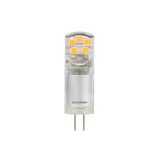

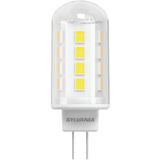
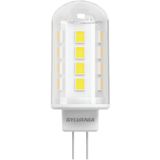
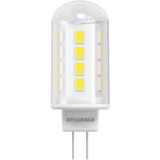
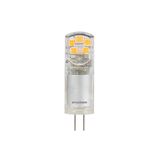
sylvania g4 led bulbs range and retrofit context
Compact luminaires, shades, and joinery pieces often need short bodies, low heat, and honest dimming. The family covers 12 V AC/DC capsules engineered as like-for-like drops with controlled inrush and calm EMI so multiple lamps share a circuit without tripping MCBs. Typical metrics: 1.2–4 W, ≈120–420 lm, 90–120 lm/W, CRI 80 standard with CRI 90 options, 2700/3000/4000 K in ≤3-step SDCM, surge 1–2 kV L-N, operating −20…+40/50 °C. For repeatable handovers, specify sylvania g4 led bulbs on the room schedule so envelopes and drivers stay consistent across floors.
sylvania small led lamps photometrics and dimensions
Beam is quasi-omnidirectional for shade fill; diffused crowns avoid pin-bright centres. Envelopes keep 5–10 mm widths and short necks to clear glass and glare rings. PF ≥0.5 is typical in this wattage class; ripple is held to workplace guidance at low scenes when paired with validated dimmers. In hospitality and residential corridors, engineers deploy sylvania small led lamps to stabilise colour and brightness without re-cutting fittings.
sylvania low voltage g4 bulbs transformers and wiring
Legacy “electronic” halogen transformers often demand a minimum load and can misbehave with light LED loads. Where dropout or shimmer appears, move to a constant-voltage 12 V supply or dedicated CC driver feeding the cups. Keep secondary runs short, respect polarity on DC rails, and document the approved driver list per area. On phased programmes, facilities mark sylvania low voltage g4 bulbs per room so crews don’t mix transformer types on the same circuit.
sylvania g4 retrofit leds dimming and flicker behaviour
Phase-cut (trailing edge preferred) works when minimum load is met; for critical spaces use remote 1–10 V/DALI drivers upstream of the cups. Target Pst LM < 1.0 and SVM < 0.9 at maintained scenes; hold fade rates slow enough to avoid step artefacts on camera. Provide a low-level scene (10–20 %) for egress routes. Projects calling out sylvania g4 retrofit leds typically include a tested dimmer matrix and note any non-dimmable rooms on the drawings.
sylvania decorative g4 lighting applications and optics
Warm 2700 K CRI 90 keeps timber and fabrics honest; 4000 K suits cabinets and pale finishes. Use opal sleeves or anti-glare crowns where the lamp is directly visible; keep 30 % overlap in repeated wall sconces to avoid dark gaps near doors and junctions. In lobbies and restaurants, designers specify sylvania decorative g4 lighting to deliver comfortable vertical illuminance without the glare spikes common to small sources.
sylvania capsule led bulbs compliance and lifetime
Mechanical footprints follow IEC 60061; electrical and EMC align with EN 61347/EN 55015/EN 61000-3-2; photobiological assessment per EN 62471. LM-80/TM-21 data on the emitters supports L70 projections of 15,000–25,000 h (model dependent). For enclosed cups, verify ambient and keep thermal interfaces clear of dust to prevent colour drift. Maintenance teams stock sylvania capsule led bulbs by envelope code and CCT/CRI so replacements don’t break the visual rhythm of adjacent rooms.
sylvania miniature g4 lamps selection for B2B
Start with geometry—neck length, body width, pin depth—then lock lumen class and CCT/CRI per zone. Decide the driver strategy (keep electronic transformers only if stable; otherwise migrate to constant-voltage rails). Record approved dimmers and minimum load per circuit, and add LED fuses where required in legacy trays. Procurement labels sylvania miniature g4 lamps by EAN/MPN, wattage band, CCT/CRI, and envelope size to keep spare policy tight.
Technical specifications for engineers
- Electrical: 12 V AC/DC; declared inrush; PF ≥ 0.5 typical; surge 1–2 kV L-N.
- Photometric: ≈120–420 lm; 90–120 lm/W; CRI 80/90; 2700/3000/4000 K; ≤3-step SDCM.
- Thermal/mechanical: short-neck options for shallow domes; −20…+40/50 °C operation; 5–10 mm body widths.
- Dimming: trailing-edge phase cut (validated lists); remote 1–10 V/DALI with CV/CC drivers for critical spaces.
- Standards: IEC 60061 caps; EN 61347 (driver safety), EN 55015/EN 61000-3-2 (EMC/harmonics), EN 62471 (photobiological).
Applications and compatibility notes
- Hotels/residential corridors: warm CRI 90, calm low scenes, short-neck bodies for enclosed domes.
- Restaurants/lounges: glare-managed crowns, tight colour bins across phases.
- Joinery/cabinets: constant-voltage rails with slim profiles; confirm bend radius and heat path.
- Office sconces: neutral whites, documented dimmer matrix, labelled cups for maintenance.
Integration with Sylvania systems
Align CCT/CRI with adjacent Sylvania panels, linears, or pendants so spaces read consistently. Place presence/daylight logic upstream on Sylvania automatics to reduce cycling and extend life; keep emergency circuits and tests separate from dimmed capsule runs.
Advantages of working with Bankoflamps
We price by room bundle and show live EU stock before crews are booked. Quotes land in about an hour with EAN/MPN so variants stay locked. Your portal tracks lead times, shipment status, and downloadable price lists with planning-grade validity windows. Approved clients can use post-payment up to 30 days. We consolidate partials to cut freight, and your account manager cross-checks envelope geometry, driver plan, lumen/CCT, dimming method, surge level, and label sets against your drawings so cartons arrive site-ready across France, the Baltics, Germany, Spain, Italy, Belgium, and the Netherlands.